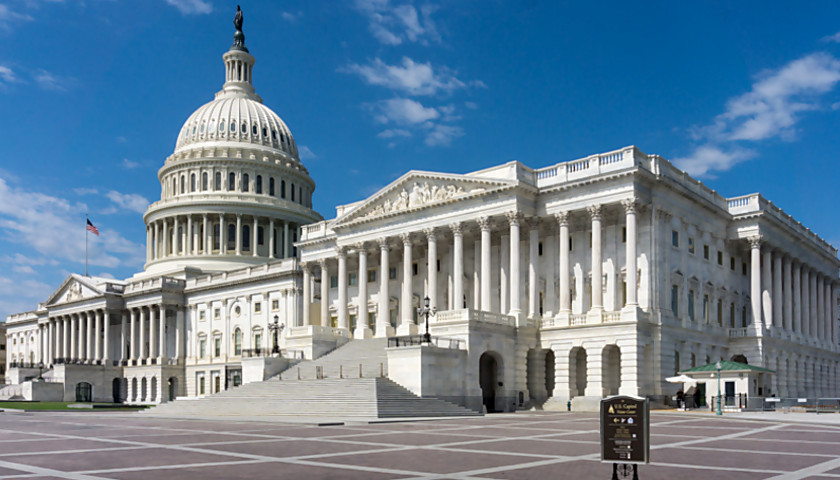by James E. Campbell
Midterm elections involve high stakes, a great deal of groundless guessing, and lots of numbers – oddly similar to lotteries. Unlike lotteries, though, the many numbers associated with midterm elections are meaningful. The six meaningful midterm “lotto” numbers below should help historically ground your anticipation of what is likely or unlikely to happen in this year’s House elections, as well as set the eventual outcome in its historical perspective. You will have to use your imagination about the numbered ping-pong balls and the machine mixing them up. On to the all-important numbers.
Our first number is 7. Since 1912 when the size of the House was fixed at 435 seats, there have been 27 midterm elections. As most everyone knows, the president’s party gained seats in only three of these (1934, 1998, and 2002). But in four additional midterms, in-party’s losses were minimal (fewer than ten seats). 7 glimmers of hope for Democrats.
Our second number is 58. The 7 in-party success story midterms are ordered in Table 1 by the net number of seats gained or lost by the president’s party. Gallup’s presidential approval ratings immediately prior to the election are included, with two exceptions. These are Coolidge’s 1926 and FDR’s 1934 midterms that pre-date Gallup’s collection of approval ratings.
In each of these 7 midterm success stories, presidents were very popular. Approval ratings were in the mid-60s for three and likely a fourth – that being Kennedy in 1962. His mid-October rating was a strong 61%, but it missed the boost he received from the resolution of the Cuban missile crisis. The crisis occurred after the October poll, but before the election. In his first post-midterm poll in late November, Kennedy’s rating had soared to 74%. His approval on election day was probably in the mid to high 60s.
The two presidents on the list with unmeasured approval marks, Coolidge and FDR, were certainly very popular in their midterms. Both midterms were bracketed by presidential landslides. The list’s lowest approval rating of a president is President George H.W. Bush in 1990 at 58%. To get on the midterm success story list, it takes a presidential approval rating of at least 58%.
Our third number is 41. In contrast to success stories of popular presidents, parties of unpopular presidents routinely take a beating. The midterms of the eight least popular presidents in the 19 midterms since 1946 are listed in Table 2. The table starts with 1946, the first midterm in which Gallup’s presidential approval ratings were collected. Presidential unpopularity ranged from the mildly unpopular Obama (45% approval) in 2010 to the extremely unpopular Truman (33% approval) in 1946. In seven of these eight midterms with unpopular presidents, the in-party lost more than 25 seats. In two, losses exceeded 55 seats.
2022 easily makes the list of midterms with unpopular presidents. Biden’s approval rating took a dive in late summer of 2021 and has slowly sunk even lower. The multiple reasons for his unpopularity are too numerous to catalog here, but they span the three crucial dimensions of dissatisfaction with his record (including the economy), his policy ineffectiveness and extremism across a wide range of issues, and a lack of confidence in his leadership.
For whatever mix of reasons, Biden’s presidential approval ratings are dismal. In the RCP daily average of polls, Biden’s approval has been less than 43% since January 2, 2022 (as of July 4th, for 183 consecutive days) and less than 41% since May 25, 2022. His approval ratings in Gallup have been 43% or lower for ten straight months (since September 2021). Gallup observed that no first-term president from Eisenhower in 1954 to Trump in 2018 has had a lower approval rating than Biden’s in June of the second year of his term. None lower. Biden’s rating for June was 41%.
Our fourth number is 0. Though most attention in 2020 was focused on the controversial presidential contest and then on the 50-50 tie in Senate after the pair of controversial Senate runoffs in Georgia, attention in more normal times would have been drawn to the razor-thin party division for control of the House. Democrats won 222 seats and Republicans 213, providing Democrats with a 5 seat majority.
A major question for the 2022 midterm is whether Democrats can hold the House. Can they avoid a net seat loss of five seats or more to the Republicans? In the 27 midterms since 1914, as Table 1 showed, the president’s party has only avoided losing fewer than five seats on four occasions. In three (1934, 1998, and 2002) they gained seats, and in a fourth (1986) they lost four seats. As we noted in Table 1, the presidents in these midterms were very popular (63% approval or better). Biden does not reside in that hemisphere. At 41%, he is 22 points short. With the consistency of his low ratings, the fact that many who disapprove of his performance do so strongly (i.e., not just chants of “Let’s Go Brandon”), and the multifaceted grounds for disapproval, the probability of Democrats maintaining their House majority is 0 (zero).
Our fifth number is 34. With Biden’s poor approval ratings, placing him in the middle or lower in Table 2’s list of unpopular presidents, the real question is how many seats Republicans will gain. To this point, we have focused on one important determinant of midterm outcomes, the popularity or unpopularity of the president. But a second important factor is the number of seats each party currently holds and the limits of the party’s competitiveness.
Both parties have competitive limits imposed by the partisan stability of American politics. Some districts are realistically “off the table” for a party. Even under the best of circumstances, the party stands no real chance of winning them. In the aggregate, this creates upper and lower limits for how many seats a party can realistically win or lose. The limits can change with time, especially after realignments alter party competitiveness, but are otherwise are quite resilient.
Table 3 lists the top ten strongest Republican Party outcomes over the 45 House elections (on-year and midterm) held in the 90 years since FDR’s election of 1932. As several others have also noted (see Josh Kraushaar, “How Big a Wave can House Republicans expect?” National Journal, 6/23/22), the upper limit for Republicans has been 247 seats. The GOP has reached into the 240s in four elections, but topped out at 247 seats in 2014. In 2022, Republicans can reach their historical competitiveness limit of 247 with a gain of 34 seats over their 2020 showing. Any gains beyond 34 would be a historic breakthrough.
Our sixth and final number is 13. In reviewing the list of midterm seat losses for the president’s party, Democrats might take heart in the results of Obama’s 2014 midterm. Obama’s approval rating of only 42% that year is comparable to Biden’s low ratings this year, and the Republicans in 2014 gained only 13 seats. Among midterms with unpopular presidents, this was an unusually light loss.
Why did Democrats lose so few seats that year with Obama’s ratings so low, and could this happen again in 2022? Could the Democrats with their highly unpopular president escape 2022 with only minor bruises? At this point, many Democrats might celebrate Republicans picking up only a dozen or so seats.
This is not going to happen, and Table 4 explains why. The table lists the twelve midterm elections since 1934 in which a Democrat was in the White House. The midterms are ordered by the number of seats Republicans held after the midterm. It also indicates how many seats Republicans held coming into the midterm and the seat change produced by the midterm. As in Table 3, the 247 Republican limit is clear. It is also clear that Republican seat gains in 2014 were as small as they were because Republicans at 234 seats went into the election already very close to their 247 historical limit. The gain of only 13 seats reflects the constraints of the competitiveness limit.
In 2022, Republicans enter the midterm with much more room from their competitiveness limit than they had in 2014 and with many reasons to think that their 247 limit may no longer be their limit. There is significant movement of working class voters across racial and ethnic groups toward the Republicans. There is movement in party affiliations. In the end, history regularly constrains us; but, on occasion, history can also be made.
So to recap, your House-Midterm Lotto Numbers for 2022 are: 0, 7, 13, 34, 41 and 58.
– – –
James E. Campbell is a UB Distinguished Professor of Political Science at the University at Buffalo, SUNY. He is author of “The Presidential Pulse of Congressional Elections” (University Press of Kentucky, 1993 and 1997), and his most recent book, “Polarized: Making Sense of a Divided America” (Princeton, 2016 and 2018), was a Choice Outstanding Academic Title.








